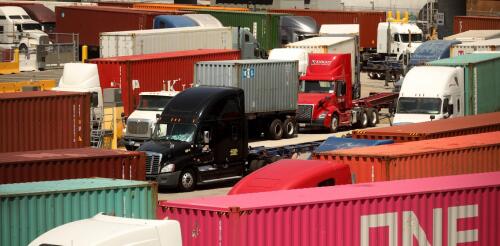Climate change
At first glance, the connections between the world’s growing population and climate change seem obvious. The more people we have on this planet, the larger their collective impact on the climate. However, a closer look with a longer time horizon reveals relationships between population size and climate change that can help us better understand both humanity’s predicament as the global population hits 8 billion people – a milestone the United Nations marked on Nov. 15, 2022. Looking back to the Stone Age For much of human evolution, our ancestors were exposed to large climatic fluctuations between ice ages and intermittent warmer periods. The last of these ice ages ended about 10,000 years ago. Before the ice sheets melted, sea levels were about 400 feet (120 meters) lower than today. That allowed humans to migrate around the world. Everywhere they went, our ancestors reshaped landscapes, first by clearing forests and then through early agricultural practices...
If the TV series “Dirty Jobs” covered animals as well as humans, it would probably start with dung beetles. These hardworking critters are among the insect world’s most important recyclers. They eat and bury manure from many other species, recycling nutrients and improving soil as they go. Dung beetles are found on every continent except Antarctica, in forests, grasslands, prairies and deserts. And now, like many other species, they are coping with the effects of climate change. I am an ecologist who has spent nearly 20 years studying dung beetles. My research spans tropical and temperate ecosystems, and focuses on how these beneficial animals respond to temperature changes. Insects don’t use internally generated heat to maintain their body temperature. Adults can take actions such as moving to warmer or colder areas. However, earlier life stages such as larvae are often less mobile, so they can be strongly affected by changing temperatures. But dun...
Barbados Prime Minister Mia Amor Mottley spoke passionately to the United Nations General Assembly in September about the mounting debt many developing countries are shouldering and its increasing impact on their ability to thrive. The average debt for low- and middle-income countries, excluding China, reached 42% of their gross national income in 2020, up from 26% in 2011. For countries in Latin America and the Caribbean, the annual payments just to service that debt averaged 30% of their total exports. At the same time, these countries are facing a “triple crisis of climate change, of pandemic and indeed now the conflict that is leading to the inflationary pressures that lead regrettably to people taking circumstances into their own hands,” Mottley said. Rising borrowing costs coupled with high inflation and slow economic growth have left developing countries like hers in a difficult position when it comes to climate change. High debt payments mean countries have...
As part of its effort to reduce air pollution and cut greenhouse gas emissions that contribute to climate change, California is pursuing aggressive policies to promote clean trucks. The state already requires that by 2035, all new cars and other light-duty vehicles sold in the state must be zero emission. Its powerful Air Resources Board has adopted rules requiring that most trucks be zero emission by 2035, and is now proposing that all trucks sold by 2040 must be zero emission. The Conversation asked a panel of transportation experts from the University of California, Davis what’s involved in such a rapid transition. 1. Why is California targeting medium- and heavy-duty trucks? Although diesel engines are valuable for moving heavy loads, they also are major polluters. Diesel trucks account for one-fourth of greenhouse gas emissions and about half of conventional air pollution from transportation in U.S. cities. Pollutants in diesel exhaust include nitrogen oxides, fine...
Henry David Thoreau, the environmental philosopher and author of “Walden”, was a keen observer of seasonal change. In 1862, for example, he wrote in the Atlantic Monthly: “October is the month of painted leaves. Their rich glow now flashes round the world. As fruits and leaves and the day itself acquire a bright tint just before they fall, so the year near its setting. October is its sunset sky; November the later twilight.” Over the past 20 years, researchers have used Thoreau’s observations of plant flowering, leaf emergence on trees and shrubs, bird migration and spring ice melt on Walden Pond to study how these events have changed since the 1850s, largely in response to climate change. Ecologists have also pulled data for modern-day research from museum specimens, journals of hunting guides and bird and butterfly club reports. Comparisons with historical records have provided insights into shifts in the natural world caused by climate chang...




